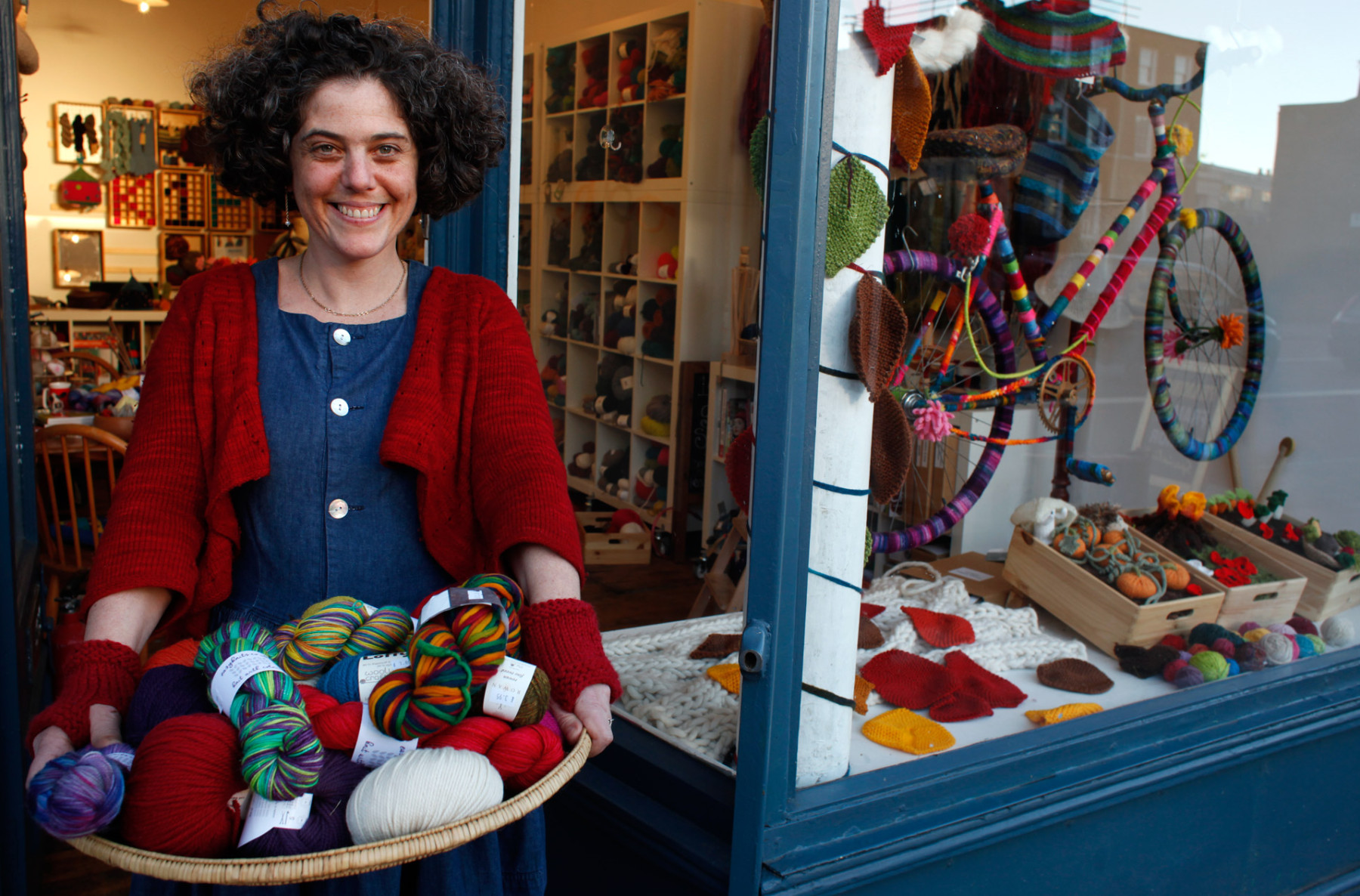A few days ago, this came in an email to the shop..
‘I would love to make the Burgos with the João but I don’t want to use a second laceweight silk yarn, as I don’t do silk and want to keep that wonderful 419 green colour.
In theory, would it work to just make it 2 or three sizes larger and use 4mm needles?‘
Then 3 things happened:
- The shop keeper scratched her head to think about the best way to explain things to the knitter so they could test out whether the “2 or 3 sizes larger” hyopethesis would work
- The knitter understood the explanation, worked out which size to make and sorted out what they needed to get started.
- The shop keeper thought perhaps it should go in the newsletter so everyone could use it..
So for all the knitters who’ve been baffled by how to work out which size of a pattern they should follow if they’re using thinner or thicker yarn than the one recommended in the pattern, this is the explanation..
Step 1: Find your Gauge Transformer.
First we need 2 pieces of information:
A. The stitch gauge that the pattern is based on – This is usually listed on Raverly pattern pages, and on the pattern itself under a heading like Gauge or Tension. We’ll call this the Pattern Gauge.
B. The stitch gauge that you get with the yarn and needles that you want to use. You can get that from knitting a swatch, or you can cross your fingers and take it from the ball band (but that route is more hazardous). We’ll call this Your Gauge.
The Gauge Transformer = Pattern Gauge divided by Your Gauge.
It will be more than 1 if you have bigger stitches than the pattern, or less than 1 if you have smaller stitches.
Step 2: Apply your Gauge Transformer to your size
Here’s the juicy bit – we’re going to take the finished (actual) bust measurement of the sweater you want to make and divide it by the Gauge Transformer number. And the answer we get is…
The size in the pattern that we should follow to get the size we actually want to wear. Simple!
In a nutshell it looks like this..
Your actual sweater size ÷ (pattern gauge ÷ your gauge) = correct pattern sweater size for you
Let’s go back to our Burgos-knitting hero. Their pattern recommended João and silk mohair held together on 5mm needles with a gauge of 16.5 stitches to 10cm.
But they wanted to leave out the mohair, and use the João on its own with 4mm needles, making their stitch gauge, 21 stitches to 10cm.
So their Gauge Transformer is 16.5 ÷ 21 = 0.8
Just for now I’m going to pretend they’ve got a 38″ bust size. The pattern calls for 6″ of ease, so the actual (finished) size should be 44″ around the bust.
Now we can apply the Gauge Transformer like this:
44 ÷ 0.8 = 55
which tells us that if our Burgos Knitter star follows the pattern instructions for the size closest to 55″, they will get a finished size of 44″.
So is it really that simple? Can we really just pick a different gauge and move ourselves up and down the sizes of a given pattern to make it work?
Well…. There is more to the sizing of a sweater than the fit around the width at the bust. Bigger and smaller sizes in a pattern will also have different lengths associated with them – and you will need to take care to follow instructions for your actual length and not a gauge-transformed length. At the same time, a reasonably on-the-way knitter who knows where they’re going with sweater-knitting, should feel confident with using their Gauge Transformer number to go off-piste with gauge and stay in control of sizing.
And if the whole gauge thing still feels a bit baffling, perhaps start with this post I wrote a while back..
With grateful thanks to Ash for the curiousity which got this post started in the first place.


1 comment for “You *can* do the maths”